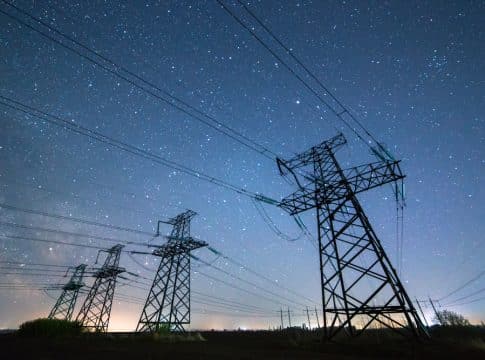UK’s £22 Billion Carbon Capture and Storage Plan: A Bold Step or A Fossil Fuel Trap?
The UK government recently announced a massive £22 billion investment into carbon capture and storage (CCS) projects over the next 25 years. The technology aims to capture carbon emissions from power plants and heavy industries before storing them underground. While this move aligns with the UK’s ambition to achieve net zero by 2050, experts question whether this strategy will lock the country into fossil fuel dependence for decades.
Prime Minister Keir Starmer recently reaffirmed the government’s commitment to CCS.
“Today’s announcement will give industry the certainty it needs – committing to 25 years of funding in this groundbreaking technology – to help deliver jobs, kick-start growth, and repair this country once and for all.”
UK’s Reduced Vision for Carbon Capture and Storage
The government initially planned to fund eight CCS projects to help the UK reach its net zero emissions target by 2050. However, due to escalating supply chain costs, only three projects will now receive government support. According to The Department for Energy Security & Net Zero (DESNZ), the first two of the Track 1 project are:
BP Plc and Equinor ASA will lead the East Coast Cluster in eastern England, focusing on carbon capture projects.
HyNet will serve industrial sites in western England and Wales, advancing carbon capture initiatives in those regions.
Source: DESNZ
While this investment shows the government’s dedication to decarbonization, the reduced scale of the program highlights the financial challenges that CCS technology faces.
According to Bloomberg, these three projects will remove around 3 million tons of CO₂ per year—far below the 20 to 30 million tons that were initially projected.
(DESNZ’s) five criteria for cluster selection – Track-1 of its Carbon Capture, Usage and Storage program.
RECENT: The “Northern Lights” Shines: Shell, Equinor, and TotalEnergies JV Powers the Norway CCS Project
A Risky Bet on Unproven Technology
The UK bets on carbon capture and storage as a viable means to achieve its net zero target. For tough industries like cement, steel, and fertilizer, CCS is a potential lifesaver. By capturing emissions and storing CO₂ underground, this process prevents greenhouse gases from entering the atmosphere.
On the downside, CCS remains largely untested on the scale needed to make a significant impact. Furthermore, The National Audit Office (NAO) has expressed concerns about the UK’s heavy reliance on CCS and has warned stating,
“Slower progress with getting Track-1 up and running means that DESNZ will struggle to achieve its 2030 ambitions for carbon capture.”
They have highlighted rising costs and the technology’s inconsistent track record. For instance, over the last 20 years, many CCS projects in the UK have failed to meet expectations, which raises uncertainty about whether this large investment will pay off.
Notably, the biggest challenges include the huge cost of CCS and massive supply chain expenses which have forced the government to step back on its original ambitions. Previously industries also tried to integrate CCS with natural gas and coal power plants but the idea was not feasible.
Additionally, the projects are already facing delays. In this case, investment decisions for the first two clusters were initially set for last year but have been postponed multiple times. The NAO has warned that continued delays could force the government to renegotiate contracts with suppliers, which could further increase costs.
The Climate Change Committee’s (CCC’s) assessment of how much CCUS will need to be deployed under its Balanced Net Zero pathway, 2020 to 2050
Source: DESNZ
Locking in Fossil Fuel Dependence
One of the most significant criticisms of the government’s CCS plan is that it could lock the UK into a reliance on natural gas for generations. Natural gas, primarily composed of methane, is a potent greenhouse gas with significant emissions occurring upstream during extraction, processing, and transportation. Relying on natural gas for energy—even with carbon capture—means the UK will continue importing it, exposing the country to volatile global energy markets.
On the contrary, renewables do not have these risks. Wind and solar power are generated locally and are not subject to fluctuating international prices. By investing heavily in CCS, the government may unintentionally slow down the transition to a fully renewable energy grid. After scrutinizing all these factors, industrialists opine that the UK should prioritize renewable energy development and energy efficiency measures to meet its climate goals more sustainably.
The Global Outlook
Currently, only two commercial-scale coal plants globally operate with CCS—Boundary Dam in Canada and Petra Nova in the US. Both projects have struggled with consistent underperformance, technical setbacks, and cost overruns. Moreover, these plants represent a tiny fraction of global power generation, raising doubts about the feasibility of scaling up CCS in time to meet the UK’s net-zero goals by 2050.
Additionally, media agency, The Conversation reported that 80% of captured CO₂ is currently used to enhance oil recovery, which further contradicts the aim of reducing fossil fuel use. Critics argue that the focus on CCS may deter investment in renewable energy projects like wind and solar, which are both cheaper and proven to be effective.
The UK is not alone in grappling with these issues. Worldwide, carbon capture projects have encountered similar problems with high costs and technical challenges.
In summary, while carbon capture technology is essential for cutting emissions from heavy industries, its limitations and rising costs pose significant challenges. The UK’s current CCS projects are already struggling with delays and escalating expenses, leading to doubts about their long-term viability. As the country pushes forward with its net-zero goals, finding a balance between ambition and practicality will be crucial in determining the success of CCS.
Balancing CCS While Embracing Renewables
Despite these challenges, the UK government remains optimistic about CCS’s role in reducing the nation’s carbon footprint. Along with £8 billion in private investment, the government’s funding will help create 4,000 jobs and build the necessary infrastructure to support carbon capture.
Source: IEA
In conclusion, the UK government will have to carefully balance its investment in CCS with the development of renewable energy to ensure it stays on track for net-zero emissions by 2050. While carbon capture offers a way to reduce emissions from industries that are hard to decarbonize, it is not the perfect solution. The government must continue to invest in wind, solar, and other renewable technologies to create a truly sustainable energy future.
Even though the government’s £22 billion bet on CCS may seem a promising decarbonization effort, only time will tell whether it leads to a truly sustainable energy future or simply prolongs the use of fossil fuels.
Data sources:
UK to Spend £22 Billion on Carbon Capture Sites as Costs Rise – BNN Bloomberg
The UK’s £22 billion bet on carbon capture will lock in fossil fuels for decades (theconversation.com)
________________________________________________________________________
FURTHER READING: Carbon Dioxide Removal (CDR) and Carbon Capture and Storage (CCS): A Primer
The post UK’s £22 Billion Carbon Capture and Storage Plan: A Bold Step or A Fossil Fuel Trap? appeared first on Carbon Credits.



